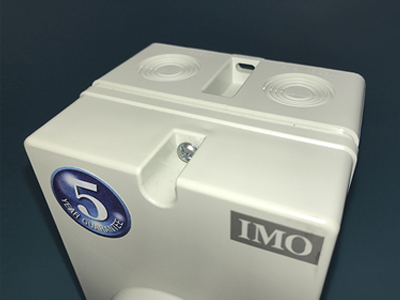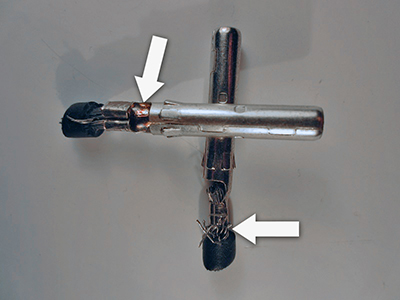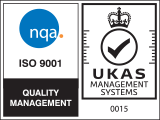In June 2018, the BRE reported its preliminary findings based on an instruction by the DECC to investigate and report on the causes of PV fires in the UK, and they make very interesting reading. Graham Viney, Quality Manager at IMO, takes a look at what we can learn...
The BRE investigation showed that by far the biggest cause of fire was the DC Isolator at 41%; but what does this mean for the isolator manufacturer, the solar installer and the end customer? Well, it certainly identifies the DC Isolator as the most significant potential point of weakness in the solar installation thereby highlighting the care and attention that should be taken in relation to its selection, installation and maintenance.
The BRE makes very concise recommendations regarding the selection criteria applicable to the DC Isolator in its publication "DC Isolators for PV Systems - a good practice guide" which can be bought at (click here), so there is little benefit in focusing further attention here on the isolator selection itself.

However, poor installation of the DC Isolator also featured prominently in the cause of fires, in particular, as a result of moisture ingress. Most good quality DC Isolator products on the market offer IP67 environmental protection, however, puncturing the back plate in order to screw the device to the wall creates a point of moisture entry and must be avoided if mounted outside. Professional enclosures will usually have external mounting mechanisms permitting secure fixing without compromising the IP integrity of the enclosure (see photo right).
Likewise, installing top-entry glands must be done with great care using at least IP66 rated, high quality gland parts or, once again, moisture will enter the enclosure and compromise performance. Indeed, Australia, one of the largest installed bases for solar globally, specifically prohibits top cable entry and the SAA specifies that all cables must enter the DC Isolator through the base; not a bad recommendation to follow here in the UK also perhaps?
Modification of the isolator also appeared to be a concern and it would appear that cases of link removal during installation were identified. If wire links are present on the isolator, then it is highly likely to be an AC Modified device and if it has been decided to go against BRE advice and use such a product, then those links must not be removed as doing so greatly increases the risk of failure.
Maintenance was another issue raised by the report. For example, how many installers (or more importantly end customers), know that many DC Isolator manufacturers specify operation of the device at least once a year? This is due to the need to periodically clean the oxidation on the contact surfaces and is even more critical on devices without knife-edge contacts. With many inverters now easily exceeding 10 year life, there is surely a clear need to find ways to communicate to the installer and the end customer that some DC Isolators are not necessarily maintenance free devices over that period?

Second on the BRE Report cause list was the Solar Connector at 15% and again, poor installation played its part. It seems that some installers have not been using the proper tools to crimp the metal insert resulting in arcing and localised heat rise (see photo left). The most commonly used MC4 style connectors require the use of custom crimping tools to ensure the integrity of the connection. These tools operate on a ratchet mechanism which, if used correctly, will not complete the crimp unless it is secure. Also, some of the larger solar connector manufacturers such as Staubli, manufacturer of the original MC4, offer on-site training to installers to ensure safe use of their products.
The risk of arcing inherent in all solar installations brings with it the need to ensure that contact surfaces bind tightly and without air gaps. All manufacturers of Solar Connectors manufacture to a tolerance so linking connectors from two different manufacturers will, inevitably, increase the risk of arcing in the circuit. In the USA, Underwriters Laboratory (UL) has sought to address this by covering intermateability within their legislation to provide that UL connector approval is only maintained when PV products are used with the same line of connectors/devices within their product family. However, with many inverter and solar panel manufacturers supplying the UK market not detailing the solar connector brand they use in their equipment, avoiding cross-mating can prove challenging.
As interesting as what caused these PV fires has been what didn't and probably the most interesting of these has been the Solar Inverter accounting for 10% of the failures. Stories of unsafe inverters and resulting questions as to whether an inverter should go in the loft of a building have been doing the rounds for years but the BRE Report suggests that the inverter is one of the safest components in the installation. This should probably not come as a surprise to us given the level of technical sophistication and the safety features incorporated into these devices, but it is reassuring nonetheless. Indeed, some inverter manufacturers now offer built-in arc fault detection which monitors the installation and can help protect against some of the causes of fires identified in the BRE Report.
Likewise, PV panels have often received a bad press with photos of burning panels atop buildings receiving extensive media coverage. However, the BRE Report identified just 5% of the failures as relating to the PV panel although the reason for the fires is difficult to ascertain. Faulty equipment or poor installation is likely to have played a part, although incorrectly specified panels could also have been a contributing factor; all of which are avoidable.
As with many reports of this kind, it seems to stimulate as many questions as it does provide answers, so what can we learn about fire safety from it? Well, the standards will surely improve over time as a result of the follow up actions and industry consultations being conducted by the BRE, MCS and other relevant bodies. In the meantime, the burden seems to fall with the installer in ensuring high levels of training in the selection of components and their proper installation, particularly in the BOS area.
But is this a burden or is this in fact a differentiator? As information such as this latest BRE report helps the continuing education of the market, the installers who can demonstrate the level of competency required to ensure compliance, not just with the standards as currently written, but with a degree of foresight that addresses what may come, will surely place themselves at a competitive advantage.


